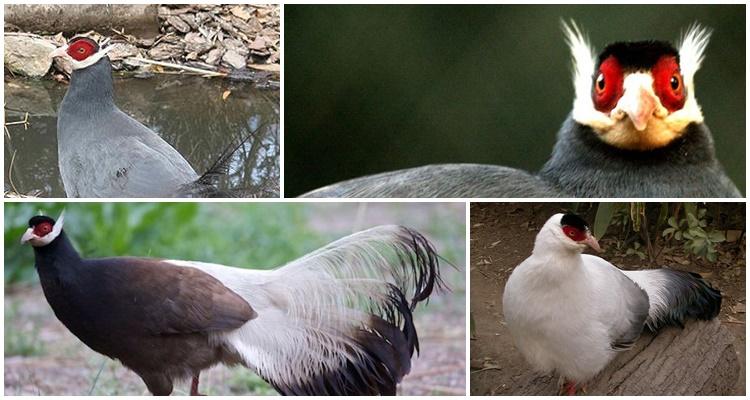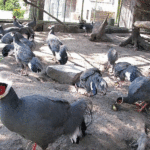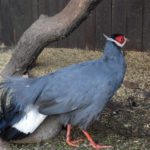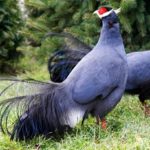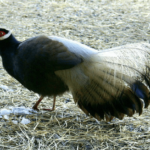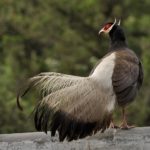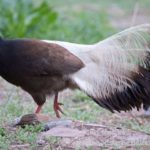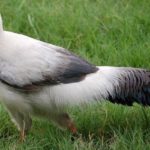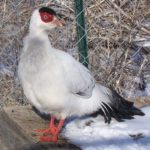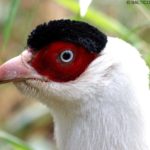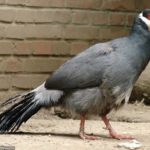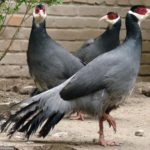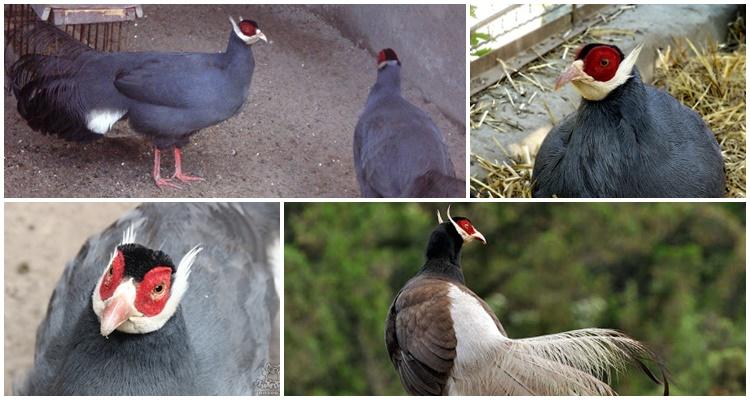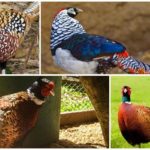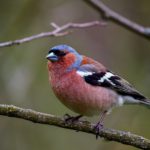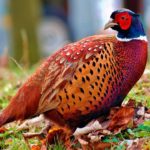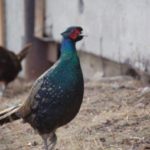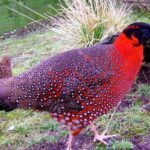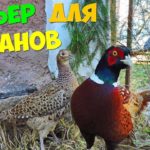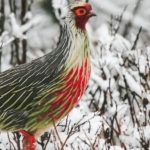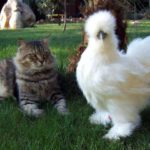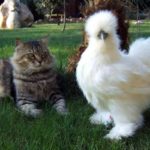Eared pheasants are one of the largest representatives of this species of birds. The bird has a non-standard appearance: motley plumage and brightly colored head. However, not only these features force farmers to breed pheasants. The bird is unpretentious in care, is characterized by frost resistance and, if necessary, is able to switch to pasture.
History of appearance
According to documented chronicles, pheasants were first domesticated near the Greek settlement of Phasis, which gave the bird its name.Later, these birds began to be bred in the territory of modern China and Tibet. It is here that the largest population of eared pheasants is found. This is due to the fact that this bird is considered sacred in Buddhist culture.
General description and characteristics of eared pheasants
These birds are distinguished by the following features:
- elongated body with bright plumage;
- strong lower limbs;
- bright border around the eyes;
- no difference in appearance between hens and roosters;
- The chicks in the first year are distinguished by their brown-gray color.
A characteristic feature of this type of pheasants is that this bird lives mainly in flocks of up to 250 individuals. But during the mating season, the birds settle in pairs.
In the winter season, birds in the wild settle at altitudes of up to 2.8 thousand meters. But in summer, birds live in pine or oak forests near water bodies. Birds feed mainly on berries.
Types of breeds
Officially, these birds are classified into 3 species. But some researchers also separately identify the Tibetan breed.
Blue
This species of birds is most often found in China.
This bird grows up to 95 centimeters in length. Moreover, only 53 centimeters are on the tail.
Brown
This breed lives mainly in Mongolian and Chinese forests.
Adults reach 100 cm in length. In this case, 50 centimeters are only on the tail.
White
White eared pheasants stand out from other breeds due to their endurance. But these birds cannot tolerate heat and high humidity. In addition, representatives of this breed spend most of the day searching for worms.
Tibetan
Tibetan pheasants live in the mountains. But this bird is often bred in households.
Externally, Tibetan pheasants are distinguished by blue feathers on the head and black feathers on the wings.Females are characterized by smaller sizes than males.
Advantages and disadvantages
Among the disadvantages of this bird is aggressive behavior during the mating season. A characteristic feature of these birds is considered to be cannibalism, which develops in a flock due to lack of free space.
Maintenance and care
Eared pheasants prefer to live in spacious enclosures with an area of at least 18 m2. These birds love dust and sun treatments, as well as splashing water from drinking bowls. In the poultry house, it is recommended to hang turnips or beets at a height of 40 centimeters.
When organizing a living space for pheasants, you need to consider the following:
- straw, sawdust or fine sand are used as bedding;
- the soil should be dry and well-drained;
- the soil next to the poultry house is sown with fast-growing grass, since birds are constantly looking for food in the soil.
Eared pheasants do not tolerate high humidity. Therefore, the litter has to be changed frequently.
Feeding
In the warm season, birds are given juniper berries, cranberries or strawberries. During the nesting period, the diet includes small invertebrates and insects. In winter, birds are switched to dried flowers and wolfberries.
You can also give special mixtures at home, which make up up to 75% of the diet. It is also recommended to feed the birds fresh grass and fruits.
Breeding and possible diseases
Eared pheasants find a mate between May and June. After this, the females begin to lay up to 10 eggs over 2-3 days. The duration of the incubation period reaches 29 days.
The chicks are actively gaining weight.Already at 6 months, young animals weigh the same as adults. Human participation in bird breeding is kept to a minimum.
This variety of pheasants suffers mainly from infectious pathologies:
- coccidosis;
- smallpox;
- aspergillosis;
- pasteurellosis;
- botulism and others.
These diseases develop mainly due to non-compliance with living conditions (high humidity, etc.).

